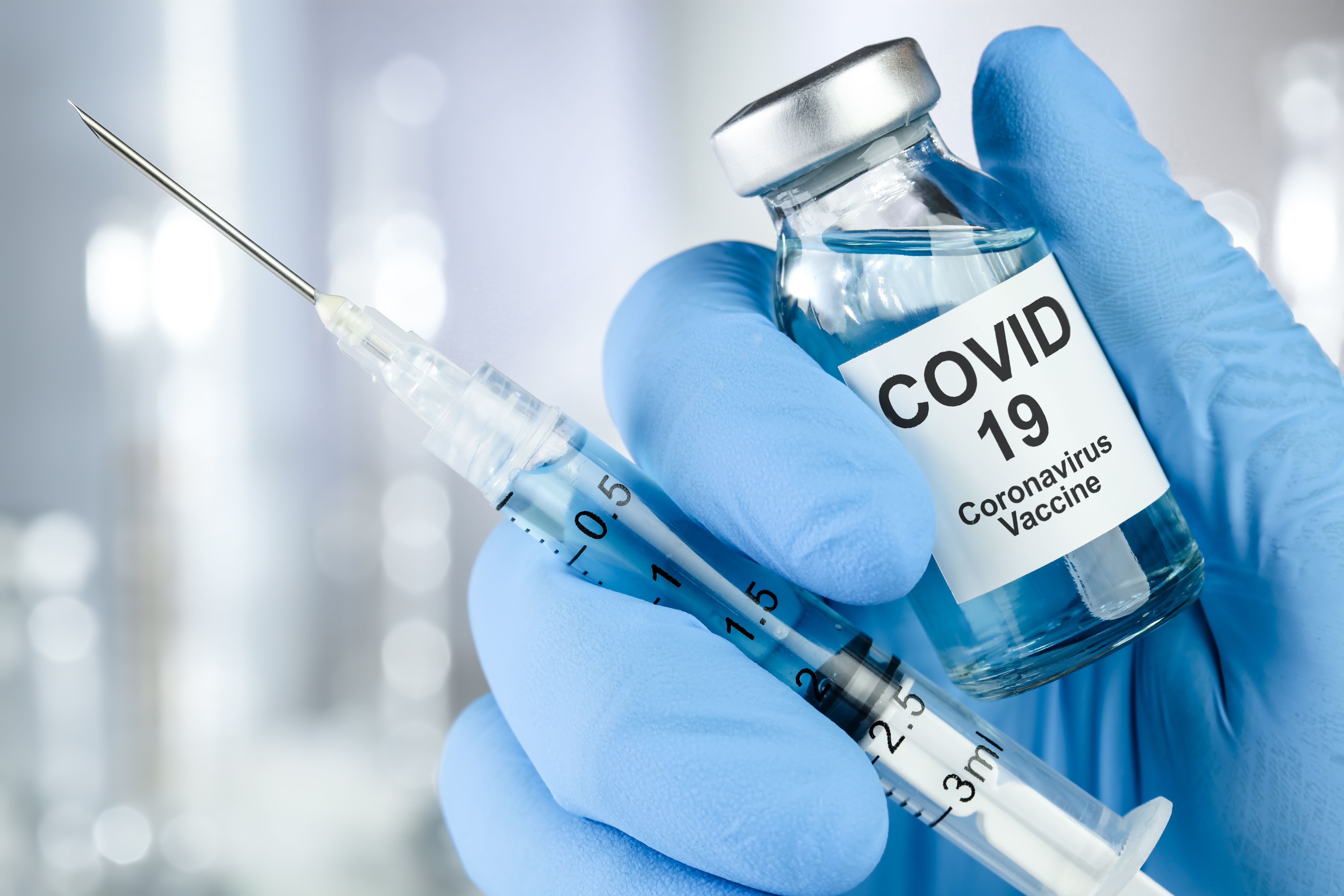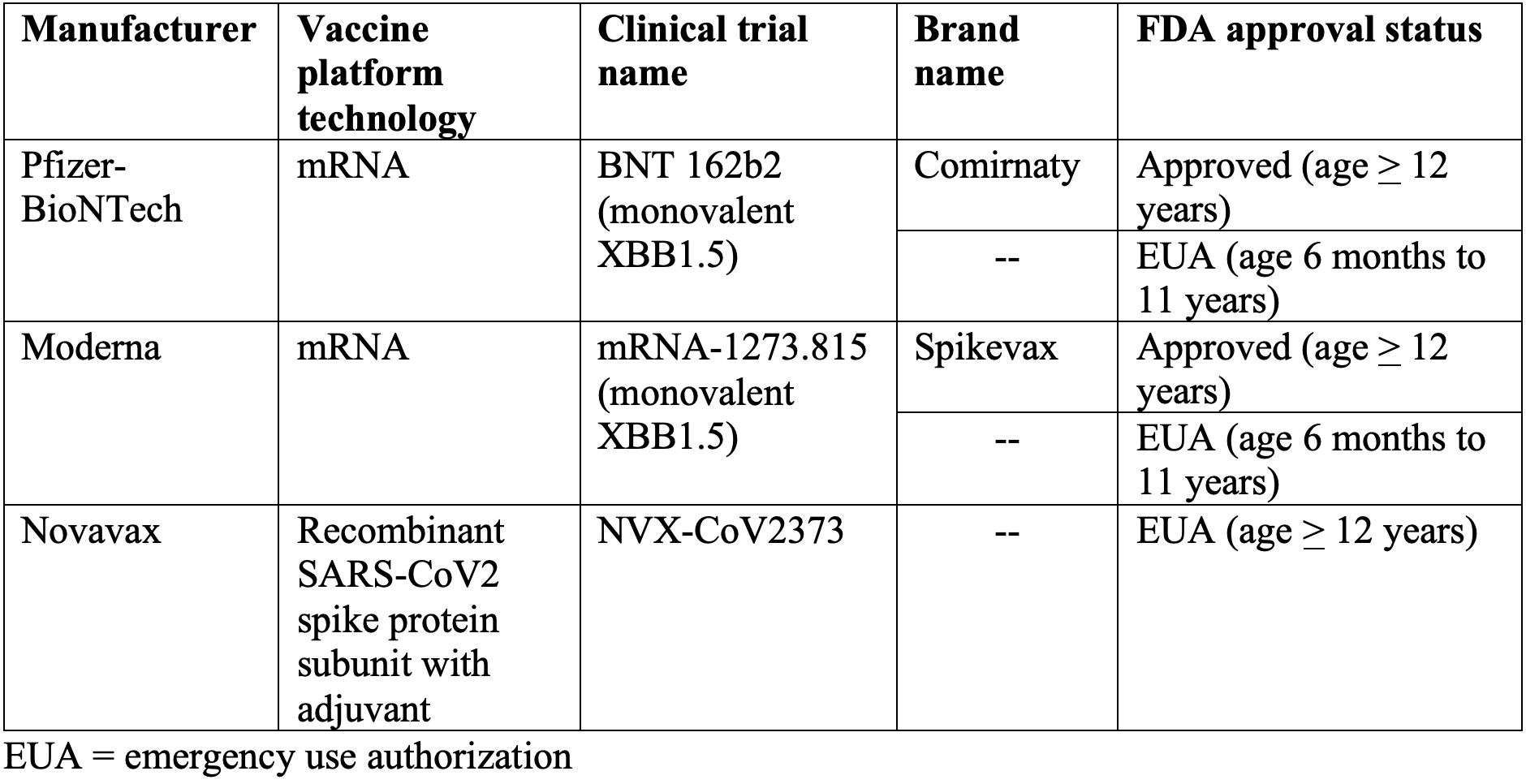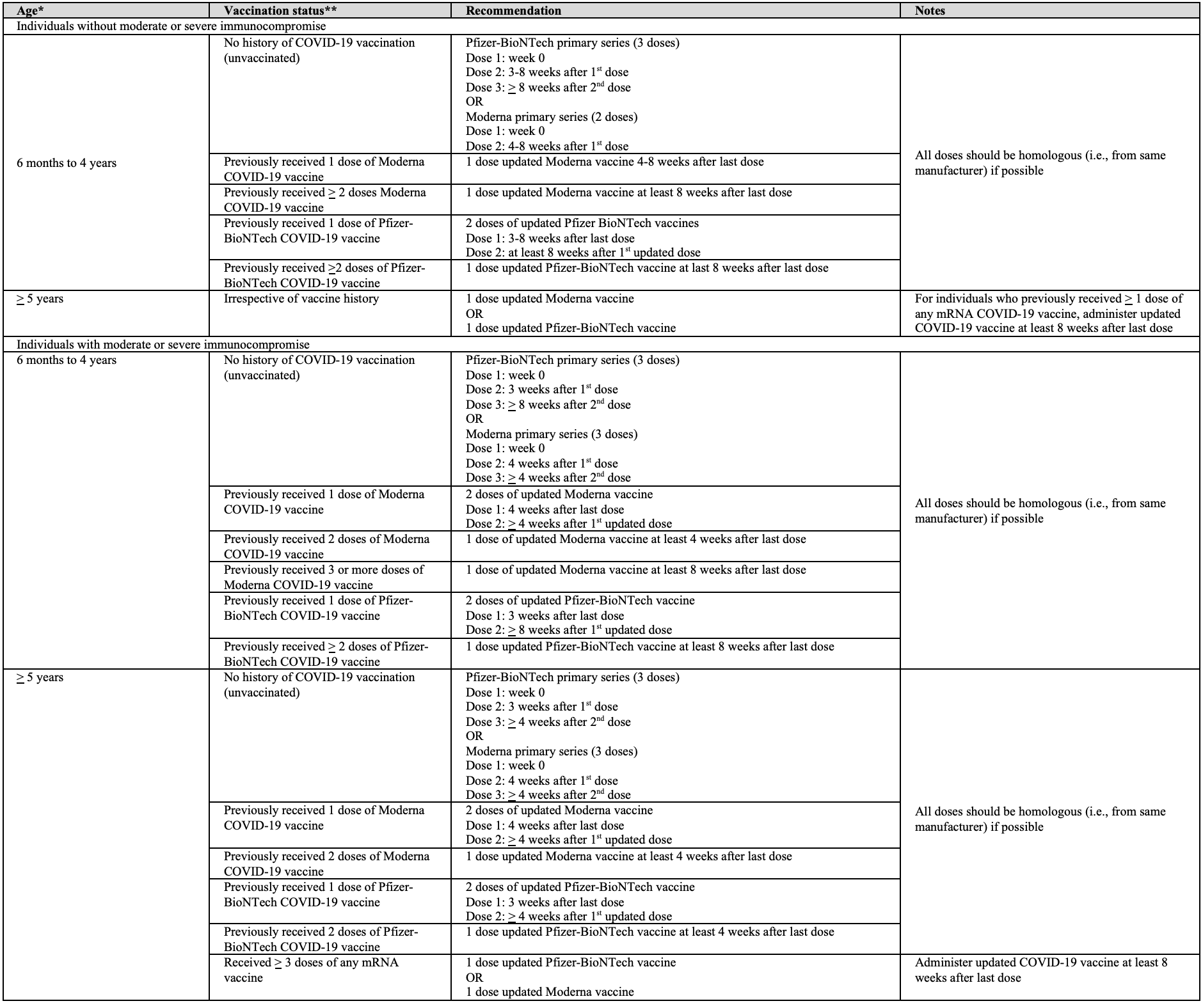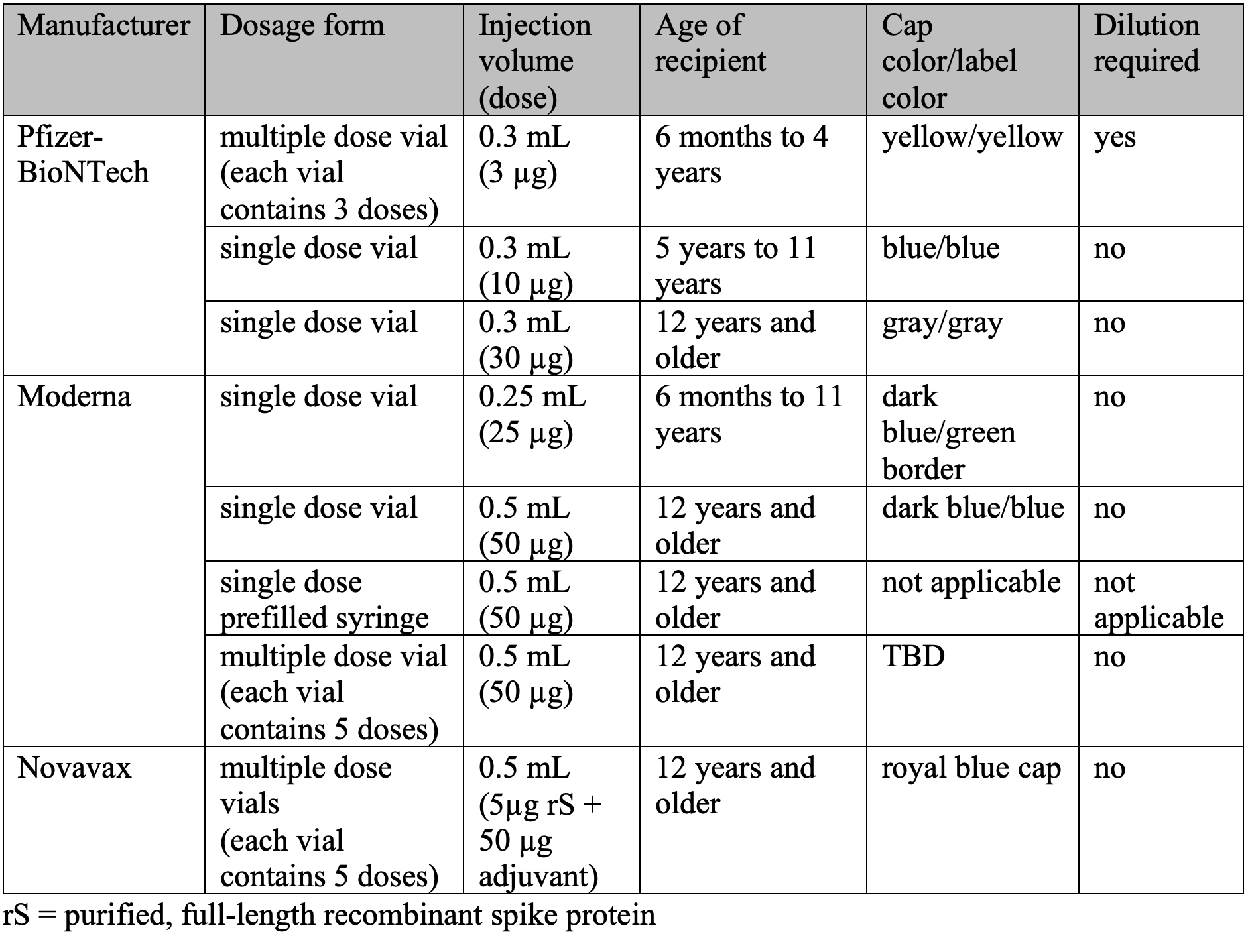Commentary
Article
Clinical Overview: 2023-2024 COVID-19 Vaccines
An overview of updated CDC ACIP recommendations for COVID-19 vaccines available through commercial channels for the 2023-2024 season.
Introduction
Severe acute respiratory syndrome coronavirus-2 (SARS-CoV-2) is a highly transmissible and pathogenic coronavirus that emerged in late 2019 and caused a global pandemic of COVID-19.1 COVID-19 caused high morbidity and mortality and significant social and economic disruption worldwide.
Image credit: Leigh Prather | stock.adobe.com

During the Federal COVID-19 Public Health Emergency (PHE), which lasted from January 31, 2020, until May 11, 2023, the government provided needed services such as free community COVID-19 testing, treatment, and vaccination.2 While the government will continue to provide free at-home COVID-19 rapid tests, this fall marks the first time the COVID-19 vaccines will transition to the commercial market, private and public payers, and traditional pathways of procurement, distribution, and payment.3,4
Despite the end of the federal PHE period, SARS-COV-2 continues to develop with new variants causing rapid transmission. In the United States, COVID-19-related deaths increased by approximately 18% between July 8, 2023, and August 26, 2023, while COVID-19 related hospitalizations increased by about 16% within a similar timeframe.5
Individuals 65 years of age and older and individuals with moderately or severely immunocompromising conditions are at the greatest risk of severe COVID-19. Vaccination remains the best protection against COVID-19 related hospitalization and death.
In June 2023, the FDA's Vaccines and Related Biological Products Advisory Committee (VRBPAC) unanimously voted to recommend that the 2023-2024 formulation of the COVID-19 vaccines be updated to a monovalent COVID-19 vaccine with an XBB-lineage of the Omicron variant.6 Based on evidence and other considerations discussed, the committee specifically recommended that the vaccines provide coverage of XBB.1.5.
At the time, XBB sublineages were dominant globally and antigenically distant from prior Omicron strains.7 While the previous bivalent vaccines maintained efficacy against XBB sublineages, they showed signs of waning, including against severe COVID-19 disease.8-10
Better matched vaccines against current circulating strains would help improve protection.11 The purpose of this review is to summarize current information about the 2023-2024 COVID-19 vaccines including recommendations from the Centers for Disease Control (CDC) Advisory Committee on Immunization Practices (ACIP) on who and when individuals should get an updated vaccine dose.
Available COVID-19 Vaccines
Currently, there are 3 COVID-19 vaccines available (Table 1).12-16 On September 11, 2023, the FDA authorized the 2023-2024 mRNA vaccines manufactured by Moderna and Pfizer-BioNTech.17
Table 1: Available COVID-19 Vaccines

Both mRNA vaccines are FDA-approved for individuals aged 12 years and older and have emergency use authorization (EUA) for 6 months to 11 years of age. The Novavax vaccine, which contains a purified recombinant spike S antigen of the SARS-CoV2 virus, has EUA for individuals aged 12 years and older.
On October 3, 2023, the FDA authorized the updated 2023-2024 formulation of the Novavax vaccine.18,19 The original monovalent and bivalent (original and BA.4/BA.5) mRNA vaccines are no longer authorized and should not be used.17 Janssen’s Ad26.CoV2.S adenovirus vector vaccine was voluntarily withdrawn from market on May 22, 2023, and is also no longer available.20
The updated vaccines are designed to target the COVID-19 omicron XBB.1.5 subvariant. Both mRNA vaccines and the Novavax vaccine elicit cellular immune response to the SARS-CoV-2 surface spike S protein.12-16
The S protein is a viral surface glycoprotein that recognizes and binds to the host cell, allowing for viral fusion and entry. The mRNA vaccines deliver mRNA into the cell which then produces the SARS-CoV-2 spike S protein that the mRNA encodes.
The Novavax vaccine contains purified recombinant SARS-CoV-2 spike S antigen and is more like a traditional vaccine. Neutralizing antibodies bind to the SARS-CoV-2 spike protein and prevent its attachment to the host cell, thereby conferring immunity.
Both Pfizer and Moderna report that their vaccines also have activity against the current dominant circulating strain, EG.5 (Eris) and BA.2.8.6 (Pirola), a new highly mutated omicron sublineage of SARS-CoV-2.21,22
Guideline Recommendations
On September 12, 2023, the CDC ACIP released recommendations for 2023-2024 COVID-19 vaccinations.23 The recommendations vary according to age group, COVID-19 vaccination history, and presence or absence of moderate or severe immunocompromise (Tables 2 and 3).24 The updated recommendations have been streamlined for certain age groups.
Table 2: 2023-2024 mRNA COVID-19 Vaccine Dosages and Dosage Intervals.
*Children who turn 4 to 5 years during their vaccine series should follow recommendations based on the age at the start of the vaccine series.
**Previous doses of Pfizer-BioNTech COVID-19 vaccine(s) refers to doses with Pfizer-BioNTech COVID-19 vaccine (original monovalent) and Pfizer-BioNTech COVID-19 vaccine, bivalent (original and Omicron BA.4/BA.5). Previous dose(s) of Moderna COVID-19 vaccine(s) refers to Moderna COVID-19 Vaccine (Original monovalent) and Moderna COVID-19 Vaccine, Bivalent (Original and Omicron BA.4/BA.5). These vaccines are no longer authorized for use in the United States.

Table 3: 2023-2024 Novavax Dosages and Dosage Intervals for Individuals Aged > 12 Years.
*Individuals with moderate or severe immunocompromise may receive additional doses of Novavax vaccine at discretion of the health care provider

For example, children who are 5 years of age can get 1 dose of either mRNA vaccine because the mRNA vaccines have harmonized dosing for this particular age. In previous years, the numbers of doses varied for 5-year-olds because manufacturers used different age cutoffs in their studies. In addition, children 6 months to 11 years of age will receive the same dose of Moderna (25 mcg), whereas in previous years there were different doses assigned to different age ranges within this age group.
CDC ACIP recommends that all individuals 6 months of age and older receive an updated mRNA vaccine. Unvaccinated children aged 6 months to 4 years of age without moderate or severe immunocompromise should receive a primary vaccination series with the updated COVID-19 mRNA vaccine, either 2 doses of Moderna or 3 doses of Pfizer-BioNTech.
In addition, all children aged 6 months to 4 years of age and/or individuals with moderately or severely immunocompromising conditions may have reduced vaccine response and should receive all doses from the same manufacturer (homologous dosing) if possible.24 Moderately or severely immunocompromising conditions include primary immune deficiency diseases (e.g., common variable immunodeficiency disease, severe combined immunodeficiency, DiGeorge syndrome, Wiskott-Aldrich syndrome), HIV infection, or active treatment with immunosuppressive or immunomodulatory therapies, including high-dose corticosteroids (i.e., 20 mg or more of prednisone or equivalent per day when administered for 2 or more weeks), transplant-related drugs, cancer chemotherapeutic agents, tumor necrosis factor receptor antagonists, and other biologic agents (e.g., B-cell-depleting agents).24
Clinical Efficacy
As of this writing, preliminary human clinical trial data are only available for the updated Moderna vaccine. In this trial, 101 adults who had previously received a primary vaccination series as well as 2 booster doses of past mRNA vaccine formulations were randomized to receive a single dose of either a monovalent XBB.1.5 mRNA vaccine or a bivalent formulation containing XBB.1.5 and BA.4/5 mRNA vaccine.21,25
Individuals who received the monovalent XBB.1.5 vaccine elicited a higher neutralizing antibody response at 15 days post-dose against XBB.1.5 compared to the bivalent formulation and with similar adverse effects as previous vaccine formulations. The preclinical data from Pfizer-BioNTech and Novavax showed increased neutralizing antibody response to XBB.1.5 pseudoviruses following vaccine administration to mice and macaques, respectively.22,26
Human studies involving COVID-19 vaccines are ongoing. Health care providers should report vaccine administration errors and vaccine-related adverse events to the Vaccine Adverse Event Reporting System (VAERS).27
Safety
The adverse effects (AEs), contraindications, warnings and precaution information are not expected to be different from previous COVID-19 vaccine formulations. Based on previous experience with the vaccines, the most common AEs among individuals aged 12 years and older are injection site pain (up to 90% incidence), fatigue (up to 78% incidence), headache (up to 75% incidence), and myalgia (up to 50% incidence).12-16 Among children aged 6 months to 11 years, the most common AEs for the mRNA vaccines are injection site redness, swelling, and pain.12-16
The COVID-19 vaccines are contraindicated in individuals with a known history of severe allergic reaction (e.g., anaphylaxis) to any component of the vaccine. Individuals who have experienced an allergic reaction to a COVID-19 vaccine in the past should avoid subsequent doses of the same COVID-19 vaccine type (i.e., mRNA vs non-mRNA); however, they may receive the alternate type of COVID-19 vaccine.24
None of the vaccines contain preservatives. The vial stoppers, prefilled syringe tip caps, and plunger stoppers do not contain rubber latex.12-16
Postmarketing data for all of the COVID-19 vaccines demonstrate an increased risk of myocarditis and pericarditis, particularly among adolescent and adult males younger than 40 years of age.28 According to the manufacturers, the highest risk is among males between 12 and 17 years of age with the Pfizer-BioNTech vaccine and between 18 and 24 years of age with the Moderna vaccine.12-15
Cases of myocarditis and pericarditis were also identified in clinical trials with the Novavax COVID-19 vaccine and have been reported during the post-authorization period.16,29 Cases have occurred most frequently within 7 days following the second dose in the primary vaccine series; however, cases have been observed following the first dose in the primary vaccine series and booster doses as well.
Extending the interval to 8 weeks between the first and second doses may reduce the risk of myocarditis and pericarditis.24 Individuals who develop myocarditis or pericarditis within 3 weeks after a COVID-19 vaccine should generally avoid any subsequent doses. Individuals who developed myocarditis or pericarditis more than 3 weeks after a COVID-19 vaccine dose may receive subsequent doses of any COVID-19 vaccine after the episode of myocarditis or pericarditis has resolved.24
Multisystem inflammatory syndrome in children (MIS-C) and multisystem inflammatory syndrome in adults (MIS-A) are rare complications of SARS-CoV-2 infection characterized by delayed-onset, post-viral myocarditis and inflammatory vasculopathies.24,25 Individuals with history of MIS-C or MIS-A may have an increased risk for an MIS-like illness or myocarditis following COVID-19 vaccination. According to the CDC, benefits of vaccination outweigh the risk of triggering an MIS-like illness for individuals with history of MIS-C or MIS-A as long as they have achieved clinically recovery, including return to baseline cardiac function, and at least 90 days have elapsed since the last diagnosis of MIS-C or MIS-A.24
Because syncope may occur following any injectable vaccine, providers should consider monitoring vaccine recipients on-site for 15 minutes after vaccination.24 Individuals who have experienced anaphylaxis due to any cause should be monitored for 30 minutes.24 Medical treatment for anaphylaxis should be immediately available if needed.
Drug Interactions
The prescribing information and fact sheets for the COVID-19 vaccines do not provide information on drug interactions with the vaccine.12-16 However, because concomitant use of immunosuppressants may lead to diminished vaccine response, COVID-19 vaccines should be administered at least 2 weeks before initiation or resumption of immunosuppressive therapies, if possible.24
Patient receiving B-cell depleting therapies on a continuing basis should receive COVID-19 vaccines approximately 4 weeks before the next scheduled therapy. The American College of Rheumatology (ACR) offers guidance for use and timing of immunomodulatory therapies in relation to COVID-19 vaccination in individuals with rheumatic and musculoskeletal disease.32 For example, the ACR recommends that subcutaneous abatacept (Orencia, E.R. Squibb & Sons) and belimumab (Benlysta, GlaxoSmithKline) be withheld for 1 to 2 weeks, as disease activity allows, after a COVID-19 vaccine dose.
Individuals who have dermal fillers may experience increased swelling at or near the site of the dermal filler injection following receipt of an mRNA vaccine and may require additional counseling and monitoring for this AE.33,34
Administration With Other Vaccines
It is acceptable to administer the COVID-19 vaccine, influenza vaccine, and respiratory syncytial virus vaccine at the same visit to eligible patients.24 This is in accordance with general best practices for immunization.35
Individuals, particularly adolescent or young adult males, who have received an orthopoxvirus vaccination (Jynneos, ACAM2000, Imvamume) should consider waiting at least 4 weeks after the orthopoxvirus vaccine before receiving a COVID-19 vaccine. The COVID-19 vaccine has been observed to enhance the risk of myocarditis and pericarditis related to the orthopoxvirus vaccines. If the COVID-19 vaccine is administered first, then there is no minimum time interval necessary between the COVID-19 vaccine and orthopoxvirus vaccination.24
Storage
The Pfizer-BioNTech COVID-19 vaccine may be stored in an ultracold freezer, between -90°C and -60°C (-130°F and -76°F), until the manufacturer expiration date.12,13 Otherwise they can be stored in the refrigerator, between 2°C and 8°C (36° and 46°F), for up to 10 weeks or at room temperature between 8°C and 25°C (46° and 77°F) for up to 12 hours.
The Moderna vaccine may be stored in the freezer until the manufacturer expiration date, up to 30 days in the refrigerator, or up to 24 hours at room temperature.14,15 The Novavax vaccine can be stored at room temperature until the expiration date.16
Safe Medication Practices
Because multiple formulations of COVID-19 vaccines are available, pharmacies should continue with safety strategies to ensure vaccination with the age-appropriate formulation, correct dose, and any preparation requirements, e.g., dilution (Table 4).
Table 4: COVID-19 Vaccine Dosage Forms and Doses

Safety strategies are also needed to safeguard against lookalike-soundalike errors. The Institute for Safe Medication Practices (ISMP) has issued alerts on medication errors stemming from confusion between COVID-19 vaccines, influenza vaccines, and epinephrine injection vials, particularly when products were stored in close proximity.36,37
Insurance Coverage
Most Americans will continue to pay nothing out-of-pocket for the COVID-19 vaccine due to their insurance coverage. The Bridge Access Program for COVID-19 vaccines and treatment is a public-private partnership that will serve as a temporary measure to prevent the loss of under- and uninsured adults’ access to COVID-19 vaccines and treatments at no cost after the vaccines enter the commercial marketplace.38 The Bridge Access Program will continue through the end of 2024.
Conclusion
The 2023 fall season marks the first time that the COVID-19 vaccines will transition from government distribution to commercial channels. The updated 2023-2024 formulations of the vaccine target the SARS-CoV-2 omicron XBB.1.5 variant.
Updated CDC recommendations for COVID-19 vaccination varies depending on age group, COVID-19 vaccination history, and presence of moderate or severe immunocompromise. Most plans and insurers will cover COVID-19 vaccination without cost-sharing. Individuals without insurance can obtain COVID-19 vaccine through the Bridge Access Program.
References
- World Health Organization Coronavirus disease (COVID-19) pandemic page. Accessed September 27, 2023 at https://www.who.int/emergencies/diseases/novel-coronavirus-2019
- Centers for Disease Control and Prevention. End of the Federal COVID-19 Public Health Emergency (PHE) Declaration. Updated September 12, 2023. Available at https://www.cdc.gov/coronavirus/2019-ncov/your-health/end-of-phe.html
- Get four free at-home COVID-19 tests this fall on COVIDTests.gov.Accessed September 26, 2023 at https://www.covid.gov/tests
- Kates J, Cox C, Cubanski J, et al. Commercialization of COVID-19 vaccines, treatments and tests: implications for access and coverage. Kaiser Family Foundation, February 13, 2023. Available at https://www.kff.org/coronavirus-covid-19/issue-brief/commercialization-of-covid-19-vaccines-treatments-and-tests-implications-for-access-and-coverage/
- CDC COVID Data Tracker, available at https://covid.cdc.gov/covid-data-tracker/#datatracker-hom
- FDA announcement: Updated COVID-19 vaccines for use in the United States beginning in Fall 2023. Available at https://www.fda.gov/vaccines-blood-biologics/updated-covid-19-vaccines-use-united-states-beginning-fall-2023
- World Health Organization. Weekly epidemiological update on COVID-19 – 08 June 2023. Available at: https://www.who.int/publications/m/item/weekly-epidemiological-update-on-covid-19---8-june-2023
- Link-Gelles R, Ciesla AA, Roper LE, et al. Early Estimates of Bivalent mRNA Booster Dose Vaccine Effectiveness in Preventing Symptomatic SARS-CoV-2 Infection Attributable to Omicron BA.5- and XBB/XBB.1.5-Related Sublineages Among Immunocompetent Adults - Increasing Community Access to Testing Program, United States, December 2022-January 2023. MMWR Morb Mortal Wkly Rep, 2023;3;72:119-124
- Poukka E, Goebeler S, Nohynek H, et al. Bivalent booster effectiveness against severe COVID-19 outcomes in Finland, September 2022 — January 2023. medRxiv, posted March 5, 2023. Available at https://www.medrxiv.org/content/10.1101/2023.03.02.23286561v1
- Link-Gelles R. Data presented at ACIP meeting April 19, 2023.Available at https://www.cdc.gov/vaccines/acip/meetings/slides-2023-04-19.html
- Lin DY, Xu Y, Gu Y, et al. Effectiveness of Bivalent Boosters against Severe Omicron Infection. N Engl J Med, 2023; 388: 764-766.
- COMIRNATY [package insert]. New York, NY: Pfizer/BioNtech; September 2023.
- Fact Sheet for Healthcare Providers administering vaccine: emergency use authorization of Pfizer-BioNTech COVID-19 vaccine (2023-2024 formula) for 6 months through 11 years of age. Revised 9/11/2023.
- SPIKEVAX [package insert]. Cambridge, MA: Moderna; September 2023.
- Fact Sheet for Healthcare Providers administering vaccine: emergency use authorization of Moderna COVID-19 vaccine (2023-2024 formula) for 6 months through 11 years of age. Revised 9/11/2023
- Fact Sheet for Healthcare Providers administering vaccine: emergency use authorization of the Novavax COVID-19 vaccine, adjuvanted (2023-2024 formula), for individuals 12 years of age and older. Revised October 3, 2023.
- FDA News Release (9/11/2023): FDA takes action on updated mRNA COVID-19 vaccines to better protect against currently circulating variants. Available at https://www.fda.gov/news-events/press-announcements/fda-takes-action-updated-mrna-covid-19-vaccines-better-protect-against-currently-circulating
- FDA News Release (01/4/2023): FDA authorizes updated Novavax COVID-19 vaccine formulated to better protect against currently circulating variants. Available at https://www.fda.gov/news-events/press-announcements/fda-authorizes-updated-novavax-covid-19-vaccine-formulated-better-protect-against-currently
- Almehdi AM, Khoder G, Alchakee AS, et al. SARS-CoV-2 spike protein: pathogenesis, vaccines and potential therapies.Infection, 2021;49:855-876.
- FDA announcement: Janssen COVID-19 Vaccine. Available at https://www.fda.gov/vaccines-blood-biologics/coronavirus-covid-19-cber-regulated-biologics/janssen-covid-19-vaccine
- Moderna announcement that COVID vaccine effective against EG5 and BA 2.8.6
- Pfizer announcement that COVID vaccine effective against EG4 and BA 2.86.
- CDC Newsroom release, September 12, 2023: CDC recommends updated COVID-19 vaccine for fall/winter virus season.Available at https://www.cdc.gov/media/releases/2023/p0912-COVID-19-Vaccine.html
- CDC Interim Clinical Considerations for Use of COVID-19 Vaccines in the United Sates (last update September 15, 2023). Accessed September 15, 2023 at https://www.cdc.gov/vaccines/covid-19/clinical-considerations/interim-considerations-us.html
- Chalkias S, McGhee N, Whatley JL, et al. Safety and immunogenicity of XBB.1.5-containing mRNA vaccines. Med Rxiv, 2023 (preprint, not peer-reviewed). Available at https://doi.org/10.1101/2023.08.22.23293434
- Novavax press release (August 22, 2023). Novavax's Updated Protein-based XBB COVID Vaccine Induced Neutralizing Responses Against Emerging Subvariants, Including EG.5.1 and XBB.1.16.6. Available at https://ir.novavax.com/press-releases/2023-08-22-Novavaxs-Updated-Protein-based-XBB-COVID-Vaccine-Induced-Neutralizing-Responses-Against-Emerging-Subvariants%2C-Including-EG-5-1-and-XBB-1-16-6
- Vaccine Adverse Event Reporting System (VAERS). Available at https://vaers.hhs.gov/reportevent.html
- Block JP, Boehmer TK, Forrest CB, et al. Cardiac complications after SARS-CoV-2 infection and mRNA COVID-19 vaccination – PCORnet, United States, January 2021-January 2022. MMWR, 2022;71:517-523. Available at https://www.cdc.gov/mmwr/volumes/71/wr/mm7114e1.htm?s_cid=mm7114e1_w
- Twentyman E, Wallace M, Roper LE, et al. Interim Recommendation of the Advisory Committee on Immunization Practices for Use of the Novavax COVID-19 Vaccine in Persons Aged ≥18 years — United States, July 2022. MMWR weekly, 2022; 71: 988-992.
- Patel P, DeCuir J, Abrams J, et al. Clinical characteristics of Multisystem Inflammatory Syndrome in Adults: a systemic review. JAMA Netw Open, 2021; 4: e2126456.
- Jiang L, Tang K, Levin M, et al. COVID-19 and multisystem inflammatory syndrome in children and adolescents. Lancet Infect Dis, 2020;20: e276-e288.
- Curtis JR, Johnson SR, Anthony DD, et al. American College of Rheumatology Guidance for COVID-19 vaccination in patients with rheumatic and musculoskeletal diseases – version 5. Arthritis Rheumatol, 2022; e1-e16.
- Osmond A, Kenny B. Reaction to dermal filler following COVID-19 vaccination. J Cosmet Dermatol, 2021;20: 3751-3752.
- Beamish IV, Bogoch I, Carr D. Delayed inflammatory reaction to dermal fillers after COVID-19 vaccination: a case report. CJEM. 2022; 24: 444–446.
- Kroger A, Bahta L, Long S, et al. General Best Practice Guidelines for Immunization. Best Practices Guidance of the Advisory Committee on Immunization Practices (ACIP). Updated August 1, 2023. Available at https://www.cdc.gov/vaccines/hcp/acip-recs/generalrecs/downloads/general-recs.pdf
- Institute for Safe Medication Practices (ISMP). Additional risk of age-related mix-ups now that our youngest patients are eligible for COVID-19 vaccines. ISMP Medication Safety Alert! Acute Care. 2022;27(13):3-5.
- Institute for Safe Medication Practices (ISMP). Errors with COVID Vaccines Lead ISMP’s of Medication Safety Concerns from 2021. News Release, January 27, 2022. Available at https://www.ismp.org/news/errors-covid-vaccines-lead-ismps-medication-safety-concerns-2021
- CDC Bridge Access Program. September 14, 2023. Available at https://www.cdc.gov/vaccines/programs/bridge/index.html
Newsletter
Stay informed on drug updates, treatment guidelines, and pharmacy practice trends—subscribe to Pharmacy Times for weekly clinical insights.






